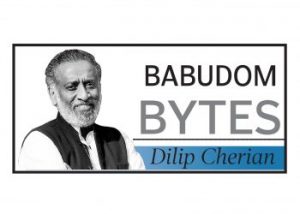Bureaucratic Foresight

Hostilities between India and Pakistan have ceased, for the moment, but when your neighbour has a history of lobbing more than just cricket metaphors across the fence, you’d better have a plan. India does. And it’s not all missiles and meetings—it’s bunkers.
Those underground shelters are scattered across Jammu and Kashmir, especially near the LoC. Built well before the current tensions reignited, these bunkers aren’t just military prep—they’re pure, no-nonsense civilian protection—a rare win for bureaucratic foresight.
Though of not much help in the Poonch region, as we discovered during the recent battle, babus say that civilians living along the border now have somewhere to run when the skies turn loud. These aren’t luxury basements; they’re reinforced, stocked-up life pods. And thanks to early safety drills, folks know exactly what to do when the sirens wail.
According to sources, these bunkers aren’t just for conventional shelling. India’s also got its own Cold War-style strategic shelters—massive, fortified command bunkers meant to survive the unthinkable: a nuclear strike. Not the kind of infrastructure you brag about at dinner, but exactly the kind you want quietly waiting in the wings.
The takeaway here? Sometimes security doesn’t look like fighter jets and high-level talks. Sometimes, it’s just a reinforced concrete room with supplies, a lock, and a plan. In a world that feels one bad headline away from chaos, these bunkers are a sobering reminder that real defence starts underground—and it’s not just for the military anymore.
IAS power play: A tale of two batches
While civil servants are competitive about reaching top administrative posts, there’s also camaraderie among officers from the same batches. And nowhere is this more evident than in the subtle flexing between the 1989 and 1991 IAS batches.
Let’s start with the 1989 batch. Not content with just holding high office, they’ve strategically planted themselves in the country’s hot zones—Delhi and Jammu & Kashmir, for starters. Atal Dulloo manages the sensitive J&K terrain, while Dharmendra navigates the bureaucratic minefield that is Delhi. Add Gujarat, Chhattisgarh, MP, Bihar, and Karnataka to the mix, and you’ve got a batch that clearly didn’t come to play—they came to control.
Now, the 1991 batch may not have Delhi or Srinagar, but they’ve spread themselves across seven states—an administrative juggernaut. From the polarised politics of Tamil Nadu and West Bengal to the election-bound buzz of Kerala and the strategic edges of Arunachal and Nagaland, the 1991 officers are navigating tough terrain, both politically and geographically.
So, who wins this round? The 1989 batch has a strategic edge, managing key Union Territories and border states with high-stakes implications. But the 1991 lot has gone wide, overseeing a broader slice of India’s messy federalism.
Either way, one thing’s clear: governance in India isn’t just about policy—it’s also about positioning. And sometimes, it takes a little batch rivalry to keep the bureaucratic engine humming.
AIS rules vs political will
Kerala’s babudom has just served up a case study in how not to inspire public confidence. The state government’s decision to extend the suspension of IAS officer N Prasanth till October 31, 2025, isn’t just unusual, it’s downright opaque.
Here’s the twist: there were two meetings of the suspension review committee within two weeks. The first, on April 23, chaired by the outgoing Chief Secretary Sarada Muraleedharan, reportedly recommended lifting the suspension. The second, just days later, chaired by the new CS, A Jayathilak, who, incidentally, is known to be at loggerheads with Prasanth, recommended extending it. Guess which one the final government order conveniently ignored?
Spoiler alert: the one that didn’t suit the script.
Now, according to All India Services (AIS) rules, suspensions beyond six months need the Centre’s green light. But in Prasanth’s case, it’s radio silence—no word on whether the Union government’s nod was sought or received. That’s a big deal. Ignoring statutory requirements isn’t a procedural lapse; it’s playing bureaucratic roulette.
At best, this is a mess of procedural ambiguity. At worst, it smells like vendetta dressed up as governance.
Civil servants aren’t above the law, sure—but neither should the system that governs them be. If rules are to mean anything, the state has to walk the talk on due process. Right now, it looks like Kerala’s government has opted for selective memory and creative silence instead.
By Dilip Cherian
News